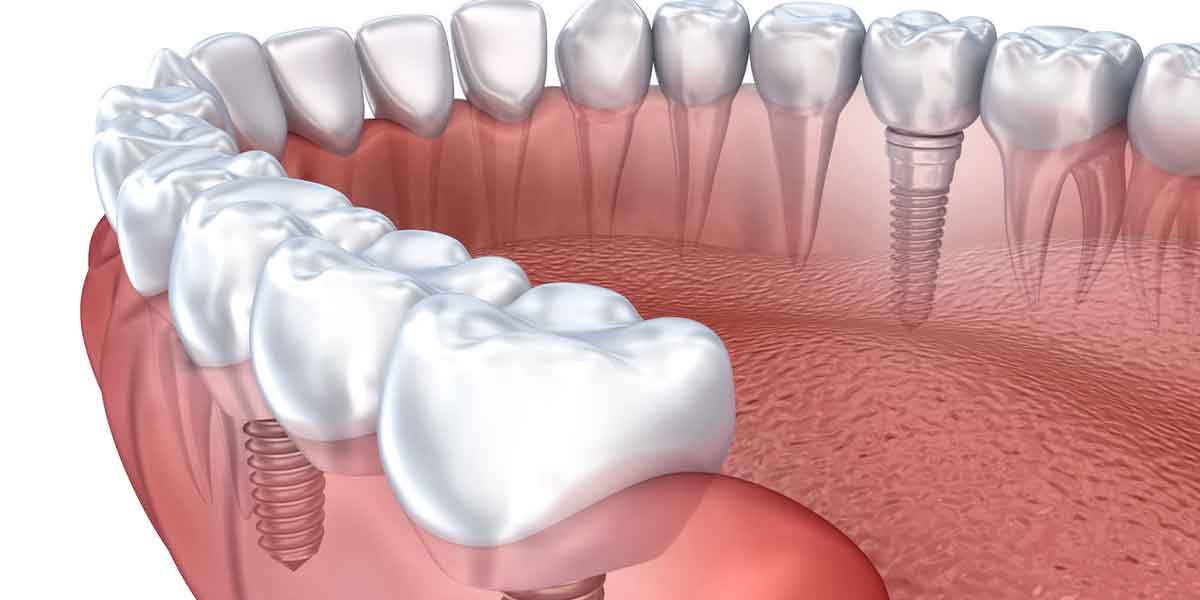Dental implants have transformed the way we address tooth loss, offering a permanent, robust, and visually appealing solution that can greatly enhance both dental health and overall quality of life. This article delves into the advantages of dental implants, the steps involved in the procedure, and tips for maintaining them effectively.
What Are Dental Implants?
Dental implants are synthetic tooth roots crafted from biocompatible materials like titanium. These are surgically embedded into the jawbone, creating a solid base for replacement teeth such as crowns, bridges, or dentures. Mimicking the function and look of natural teeth, dental implants offer a durable solution for those experiencing tooth loss.
Key Components of Dental Implants
Dental implants are composed of three primary parts:
- Implant Fixture: The titanium post that is surgically placed into the jawbone, acting as the artificial root.
- Abutment: A connector that is attached to the implant fixture, securing the replacement tooth or teeth.
- Prosthesis: The visible part of the implant, which can be a crown, bridge, or denture.
Advantages of Dental Implants
Dental implants provide several benefits over traditional tooth replacement methods. Here are some of the main advantages:
Enhanced Oral Health
Dental implants contribute to better oral health in various ways:
- Preserve Jawbone Integrity: Implants stimulate the jawbone, preventing bone deterioration and maintaining facial structure.
- Prevent Tooth Movement: By filling the gap left by a missing tooth, implants prevent adjacent teeth from shifting out of alignment.
- Protect Natural Teeth: Unlike traditional bridges, implants do not require the alteration of neighboring teeth, preserving their natural state.
Improved Aesthetics
Dental implants offer a natural-looking and appealing smile. The prosthetic teeth are designed to match the color, shape, and size of your natural teeth, ensuring a seamless appearance. This can enhance self-esteem and overall aesthetics.
Durable and Long-Lasting
With proper care, dental implants can last a lifetime. They are constructed from durable materials that can withstand daily wear and tear, making them a reliable and long-term solution for missing teeth.
Enhanced Functionality
Dental implants function like natural teeth, allowing you to eat, speak, and smile with confidence. Unlike dentures, which can slip or cause discomfort, implants provide a stable and secure fit, improving your ability to chew and speak effectively.
The Dental Implant Process
The dental implant process involves several stages, each essential for ensuring the success and longevity of the implants. Here is an overview of the procedure:
Initial Consultation and Planning
The first step is a thorough consultation with your dentist. During this visit, your dentist will evaluate your oral health, take X-rays or 3D scans, and discuss your treatment options. A personalized treatment plan will be developed to meet your specific needs.
Assessment and Imaging
- Oral examination to assess the condition of your teeth and gums
- X-rays or 3D scans to evaluate bone density and structure
- Discussion of your medical history and any underlying health conditions
Surgical Placement of the Implant
The next step is the surgical placement of the implant fixture. This procedure is typically performed under local anesthesia, although sedation options are available for anxious patients. The dentist will make an incision in the gum tissue, create a small hole in the jawbone, and insert the implant fixture.
Healing and Osseointegration
After the implant is placed, a healing period of several months is required. During this time, the implant undergoes osseointegration, a process where the implant fuses with the jawbone, providing a strong and stable foundation for the replacement tooth.
Attachment of the Abutment
Once osseointegration is complete, the abutment is attached to the implant fixture. This minor procedure involves reopening the gum tissue to expose the implant and securing the abutment in place. The gum tissue is then allowed to heal around the abutment.
Placement of the Prosthesis
The final step is the placement of the prosthesis. Your dentist will take impressions of your teeth to create a custom crown, bridge, or denture that matches your natural teeth. The prosthesis is then attached to the abutment, completing the dental implant procedure.
Maintaining Dental Implants
Proper care and maintenance are crucial for the longevity and success of dental implants. Here are some tips for keeping your implants in optimal condition:
Practice Good Oral Hygiene
Good oral hygiene is essential for preventing infection and ensuring the health of your implants. Brush your teeth twice a day with a soft-bristled toothbrush and non-abrasive toothpaste. Floss daily to remove plaque and food particles from around the implant and prosthesis.
Regular Dental Visits
Regular dental visits are important for monitoring the health of your implants and detecting any potential issues early. Visit your dentist every six months for a professional cleaning and examination.
Avoid Hard or Sticky Foods
Avoid chewing on hard or sticky foods that can damage your implants or prostheses. Be mindful of habits like biting on ice, pens, or fingernails, as these can also cause damage.
Quit Smoking
Smoking can impair the healing process and increase the risk of implant failure. If you smoke, consider quitting to improve the success and longevity of your dental implants.
Conclusion
Dental implants offer a safe, effective, and long-lasting solution for missing teeth, providing numerous benefits for your dental health and overall well-being. By understanding the procedure, benefits, and care requirements, you can make an informed decision about whether dental implants are the right choice for you. Consult with your dentist to explore your options and take the first step towards a healthier, more confident smile.




